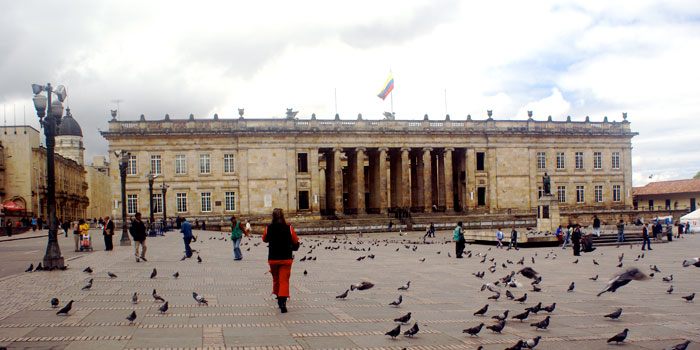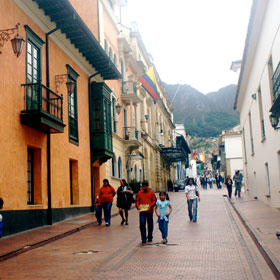Bogotá in brief
Marvel at the stories of Bolivar and the history of this elegant city.
Day 1
Bogotá
Arrival to El Dorado airport in Bogotá with an intercontinental flight. Reception and transfer to the hotel. B
Day 2
Bogotá
This morning, visit the historic centre known as La Candelaria., an antiquated neighbourhood of great architectural and cultural heritage with old “stately homes” or large Spanish colonial buildings with iron windows, thick and sturdy wooden doors, balconies and internal patios with hidden gardens.
Visit Plaza de Bolivar, where a statue of the great liberator Simon Bolivar is located. The Cathedral, on the eastern side of the plaza, is constructed on the remains of the first church built in Bogotá in 1539 and houses an important collection of religious artefacts such as textiles and artwork from over four centuries.
The Capitol, built between 1847 and 1926, shows its renaissance and neoclassical influences with its carved stonework and tall columns and, it is the first republican piece of civil architecture. Around the Plaza de Bolivar are the Palacio de Justicia, the Mayor of Bogotá’s offices called the Edificio Liévano, the oldest school in the county, San Bartolomé, and the Casa de los Comuneros who participated towards the end of the XVII Century in some of the first movements towards independence from Spain and the formation of the Republic.
Visit the Museo Botero, a colonial house filled with works of art done by and donated by Fernando Botero which also includes artwork from his own personal collection by Picasso, Renoir, Dalí Matisse, Monet and Giacometti.
Next is the Museo del Oro which has a permanent exhibition of some 32,000 pieces of gold, 20,000 stones, ceramics and textiles all precious to the Quimbaya, Calima, Tayrona, Sinu, Muisca, Tolima, Tumaco and Magdalena cultures. The Museo del Oro is considered as one of the most important museums of its type internationally and it has been functioning since 1939. Afternoon free to explore the city and perhaps some of its other museums. B
Day 3
Bogotá – Zipaquirá – Bogotá
This morning, travel north, towards Zipaquirá. Travelling through the Sabana de Bogotá the scenery is made of greenhouses used for the cultivation of carnations and roses. Flower production is an important industry in this region. After a journey just over an hour, reach the impressive Salt Cathedral, a true feat of engineering. The name Zipaquirá refers to Zipa, the leader of the Muisca tribe and the overlord of these rich salt mines. The trip will begin in a tunnel that passes the fourteen Stations of the Cross and continues on to a dome. This dome is lit in such a way that it allows one to contemplate the universe and the relationship between man and nature.
Later, reach an enormous cross carved into the rock and finally the three naves of the Cathedral which represent the birth, life and death of Christ. In the central nave is the main altar, above which is a cross measuring 16m in height and 10m in breadth, made by the Colombian artist Carlos Enrique Rodriguez and the largest cross made from salt in the world.
Next we visit the mine where there is an excellent auditorium that can seat two hundred people, host film screenings and events such as fashion shows. The trip ends at a mirror of water where one can experience the amazing visual effects of water on carved saline rock. Lunch at a nearby town before returning to Bogota. Afternoon at leisure. B L
Day 4
Bogotá
Transfer to the airport for your flight to Bogotá.

Photo top page by Michael Lechner on Unsplash.
Tour Cost



